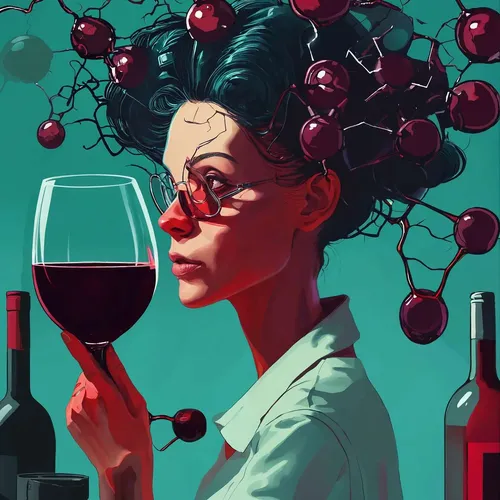Wine in Art – From Ancient Gods to Pop Culture
- Author
- Andreea Botezatu
- Published
- Mon 01 Sep 2025
- Episode Link
- None
Wine shimmers across the history of art: painted on Egyptian tomb walls, poured into Greek amphorae, celebrated in Roman mosaics, lifted in Renaissance chalices, and glowing in Impressionist picnics. In this episode of The Wine Lab, we follow its journey through image, poetry, and song, tracing how wine has carried sacred meanings, earthly joys, and artistic inspiration across millennia—ending with Pablo Neruda’s luminous Ode to Wine.
🍷 Glossary of Lesser-Known Terms
Amphora
A tall, two-handled clay vessel used in ancient Greece and Rome to store and transport wine. Often decorated with painted scenes.
Dionysus / Bacchus
The Greek (Dionysus) and Roman (Bacchus) gods of wine, fertility, and festivity. Frequently depicted with vines, ivy crowns, satyrs, and panthers.
Symposium
A Greek banquet or drinking party where men gathered to drink wine, discuss philosophy, and enjoy poetry, music, and games.
Kottabos
A popular drinking game played at Greek symposia, where participants flung the dregs of their wine at a target, often while reclining.
Maenads
Female followers of Dionysus in Greek mythology, often shown in ecstatic dances, symbolizing the wild, frenzied side of wine and ritual.
Carmina Burana
A medieval collection of Latin songs and poems (12th–13th century) written by wandering students and clergy. Includes both religious hymns and bawdy drinking songs. Later set to music by composer Carl Orff.
In Taberna Quando Sumus
One of the most famous drinking songs from Carmina Burana, describing the chaos and revelry inside a tavern.
Cistercians and Benedictines
Catholic monastic orders in medieval Europe. They preserved viticulture knowledge and carefully cultivated vineyards, especially in Burgundy, often recording early observations of terroir.
Terroir
A French term describing the unique combination of soil, climate, and geography that shapes the character of a wine. First systematically studied by monastic orders in the Middle Ages.
Mission Grape
The first European grape variety planted in the Americas by Spanish missionaries, used for sacramental wine in Mexico, Chile, and later California.
Counter-Reformation
A movement within the Catholic Church (16th–17th centuries) responding to Protestant Reformation. In art, it emphasized realism and emotional intensity—Caravaggio’s gritty, dramatic paintings reflect this style.
Jan Steen
A Dutch Golden Age painter known for lively, chaotic tavern and household scenes, often using spilled wine and misbehavior as moral lessons.
Ode to Wine
A lyrical poem by Chilean poet Pablo Neruda, celebrating wine as both an earthly pleasure and a cosmic force.
For more detailed wine science checkout my YouTube channel here: https://www.youtube.com/@Enology_channel
